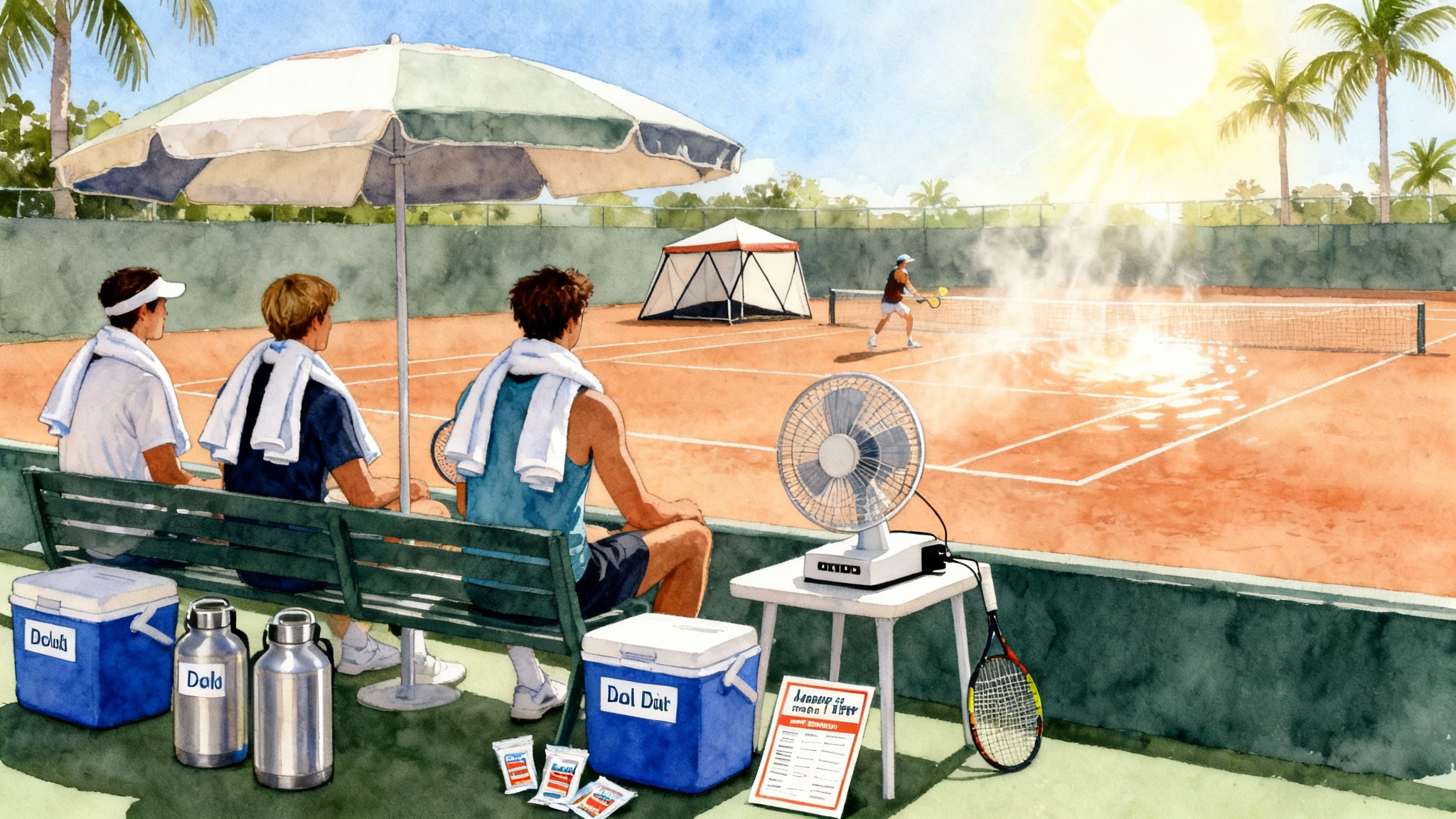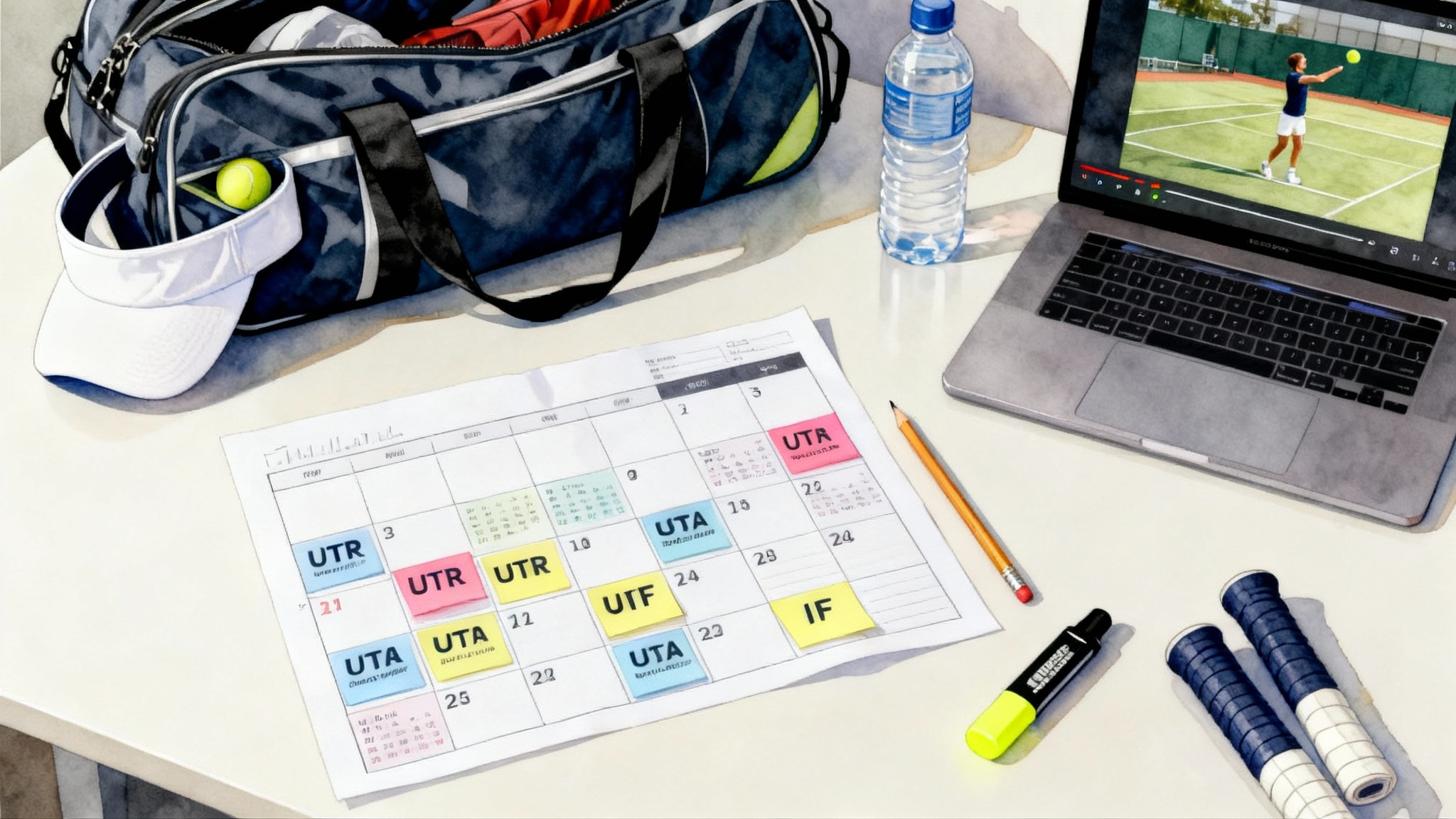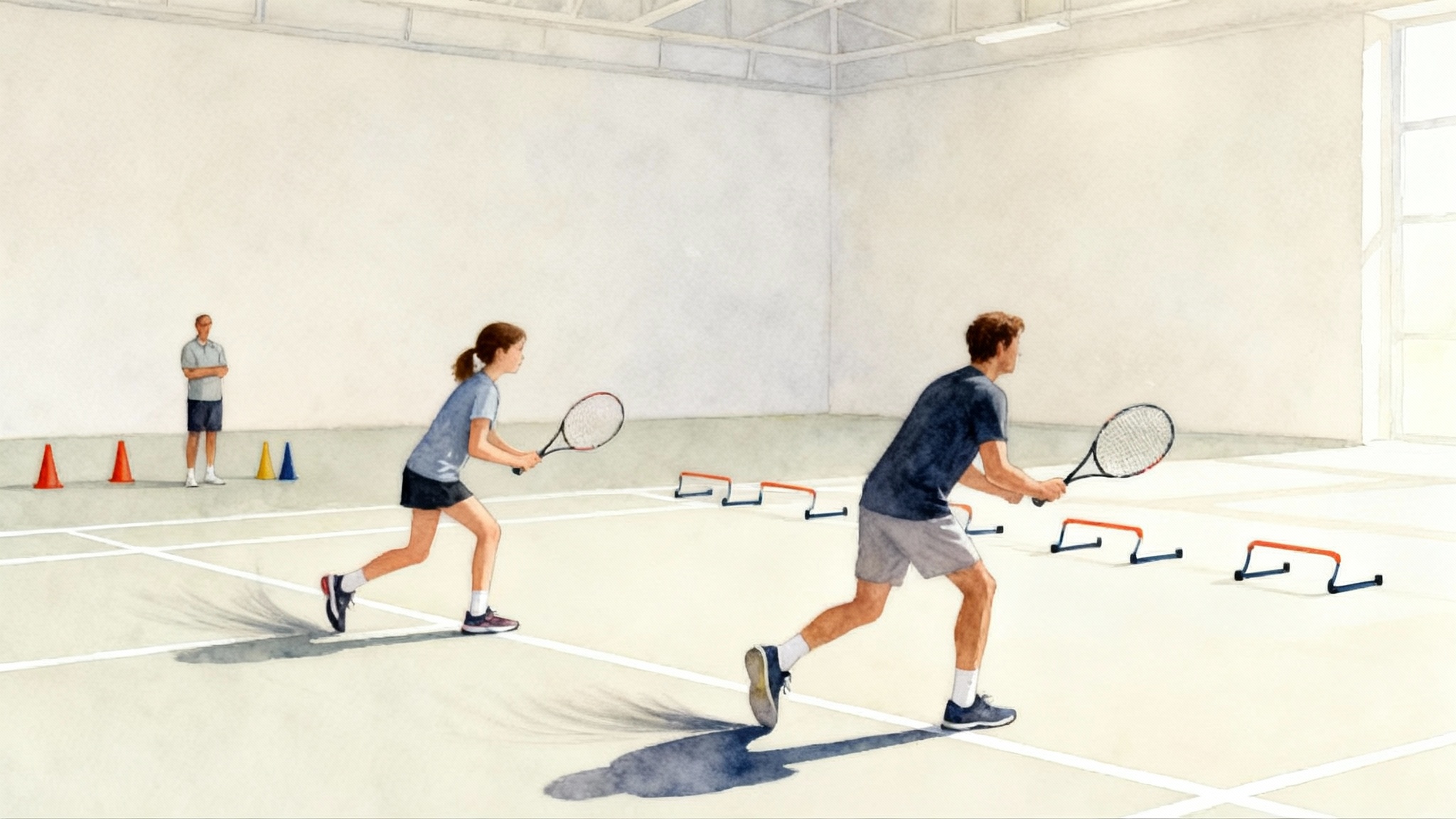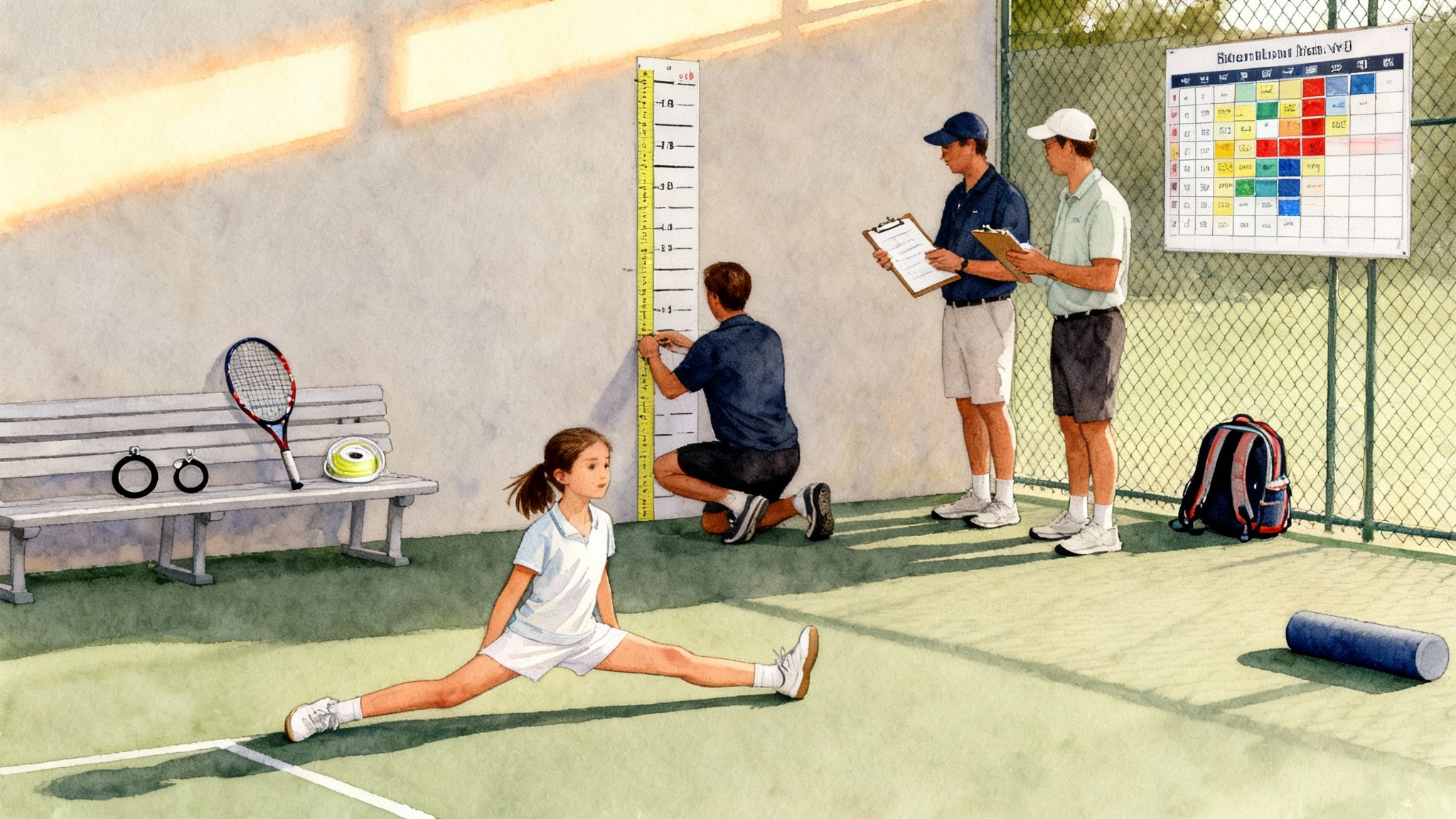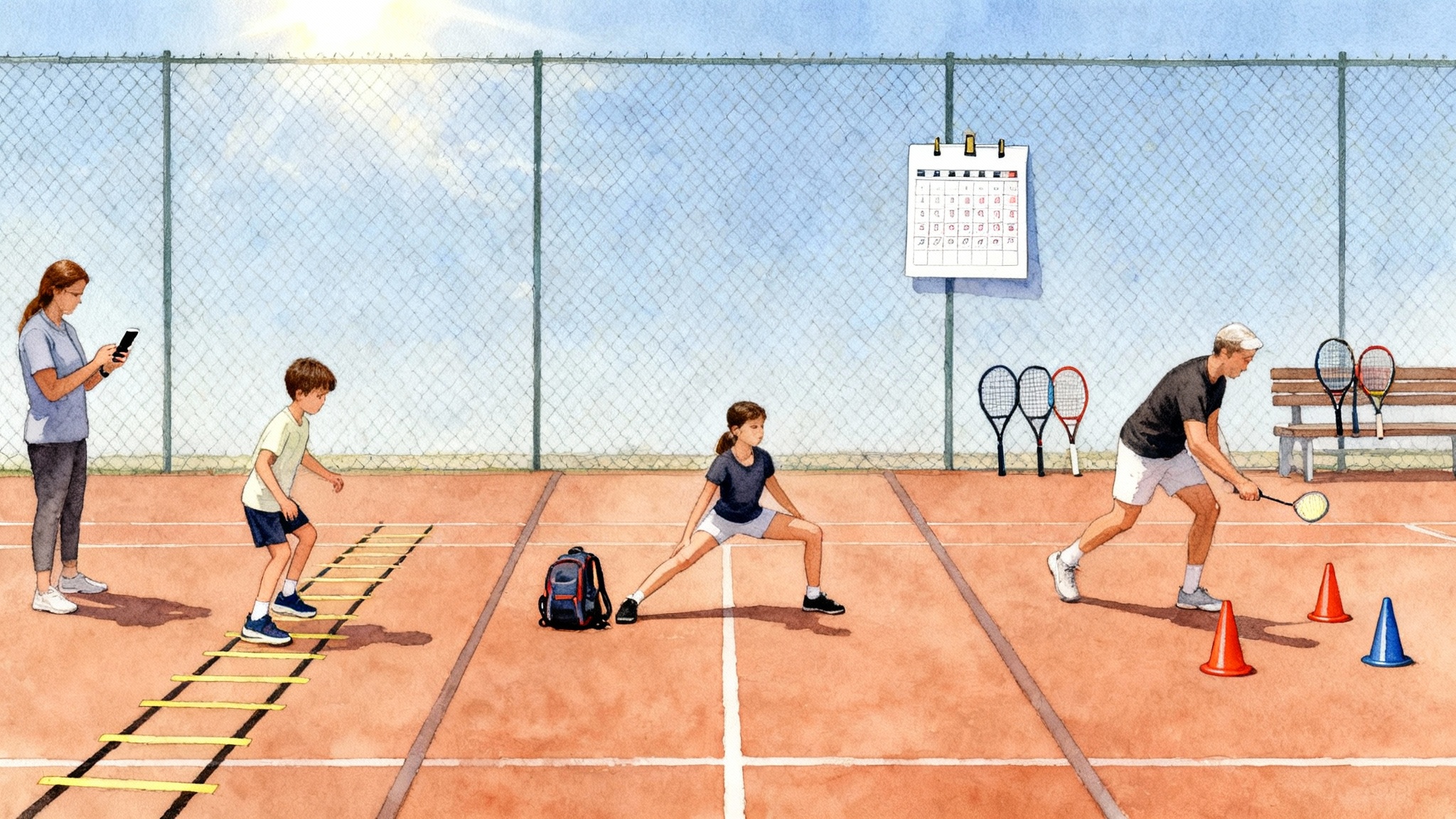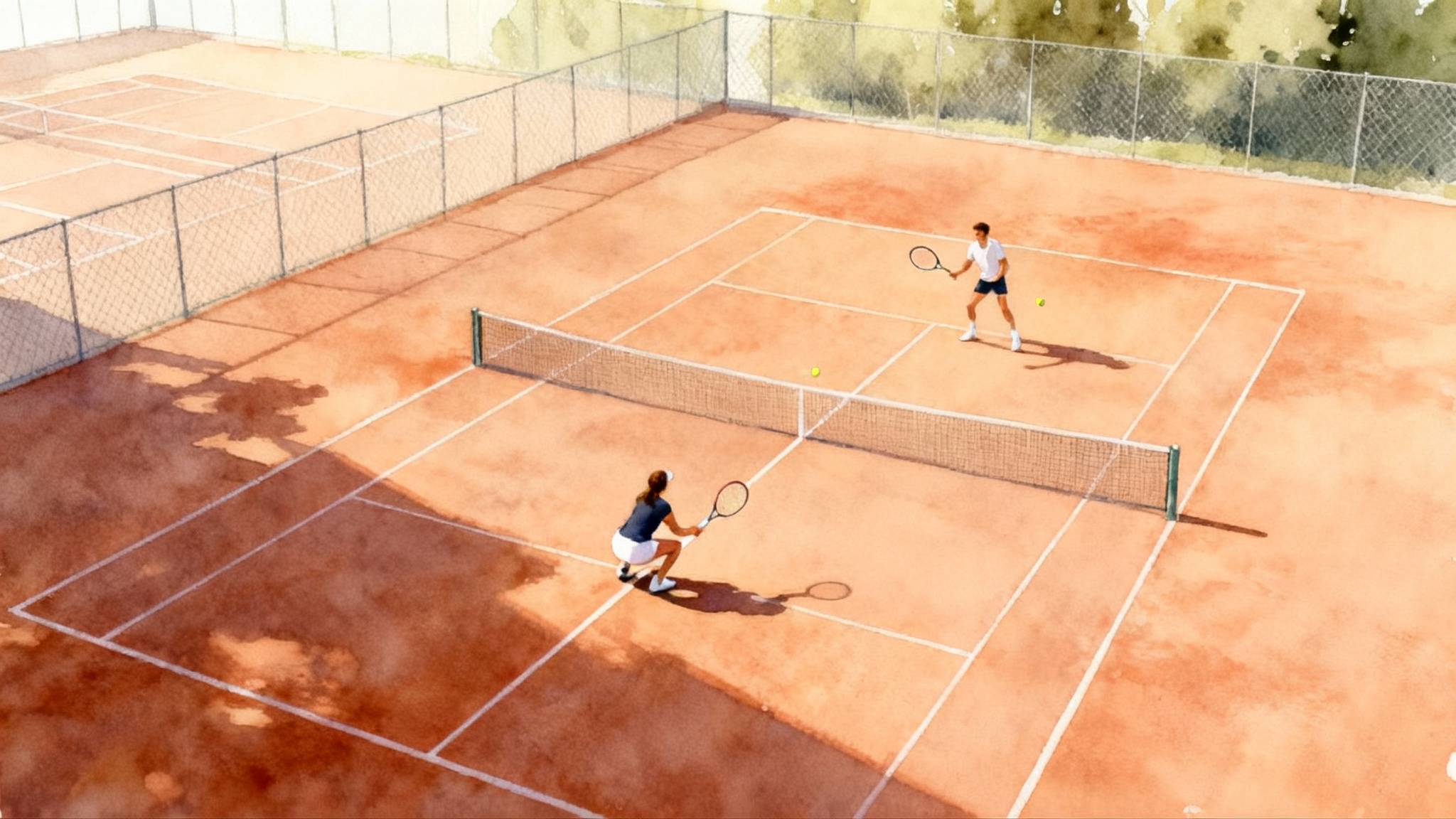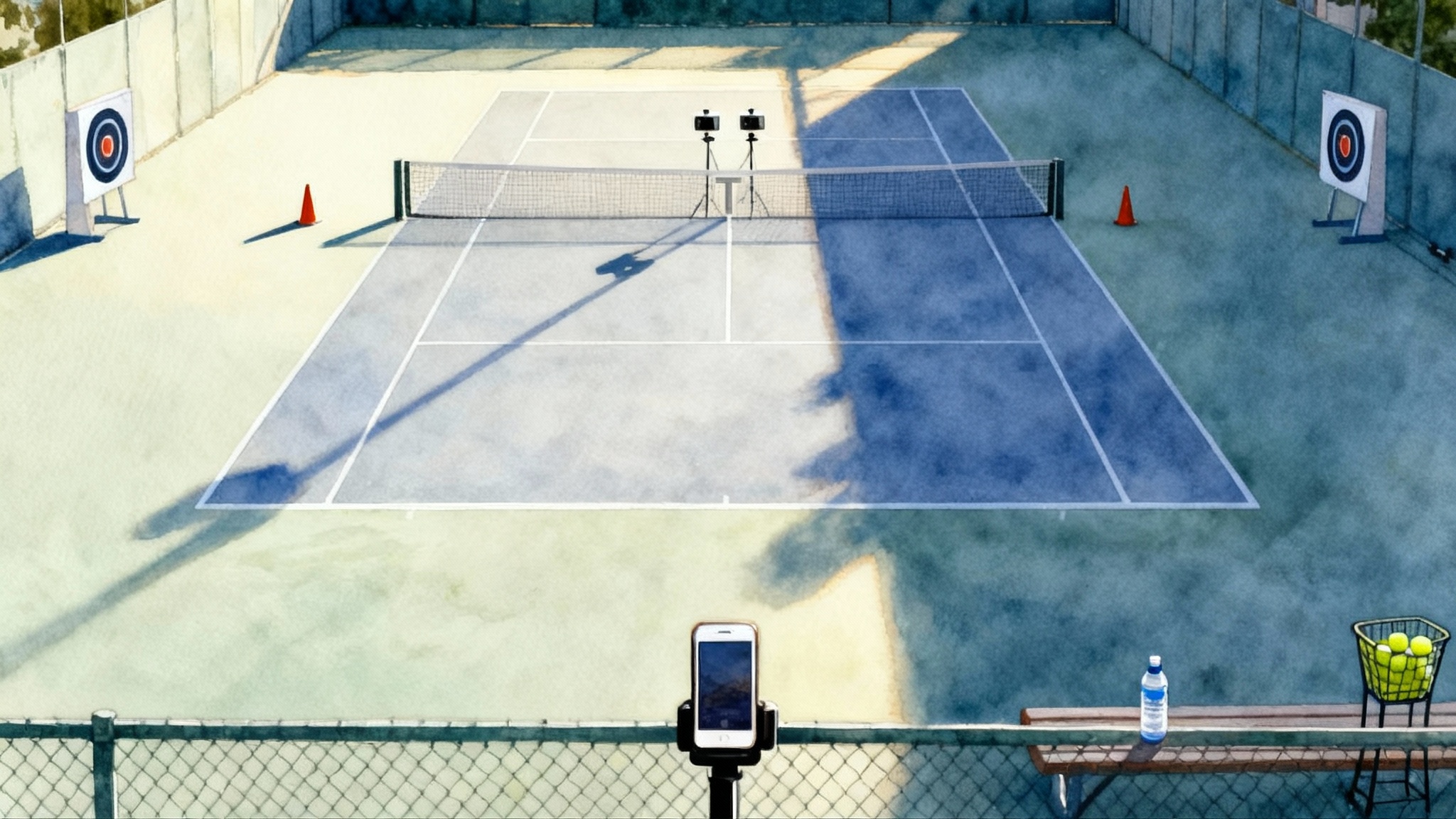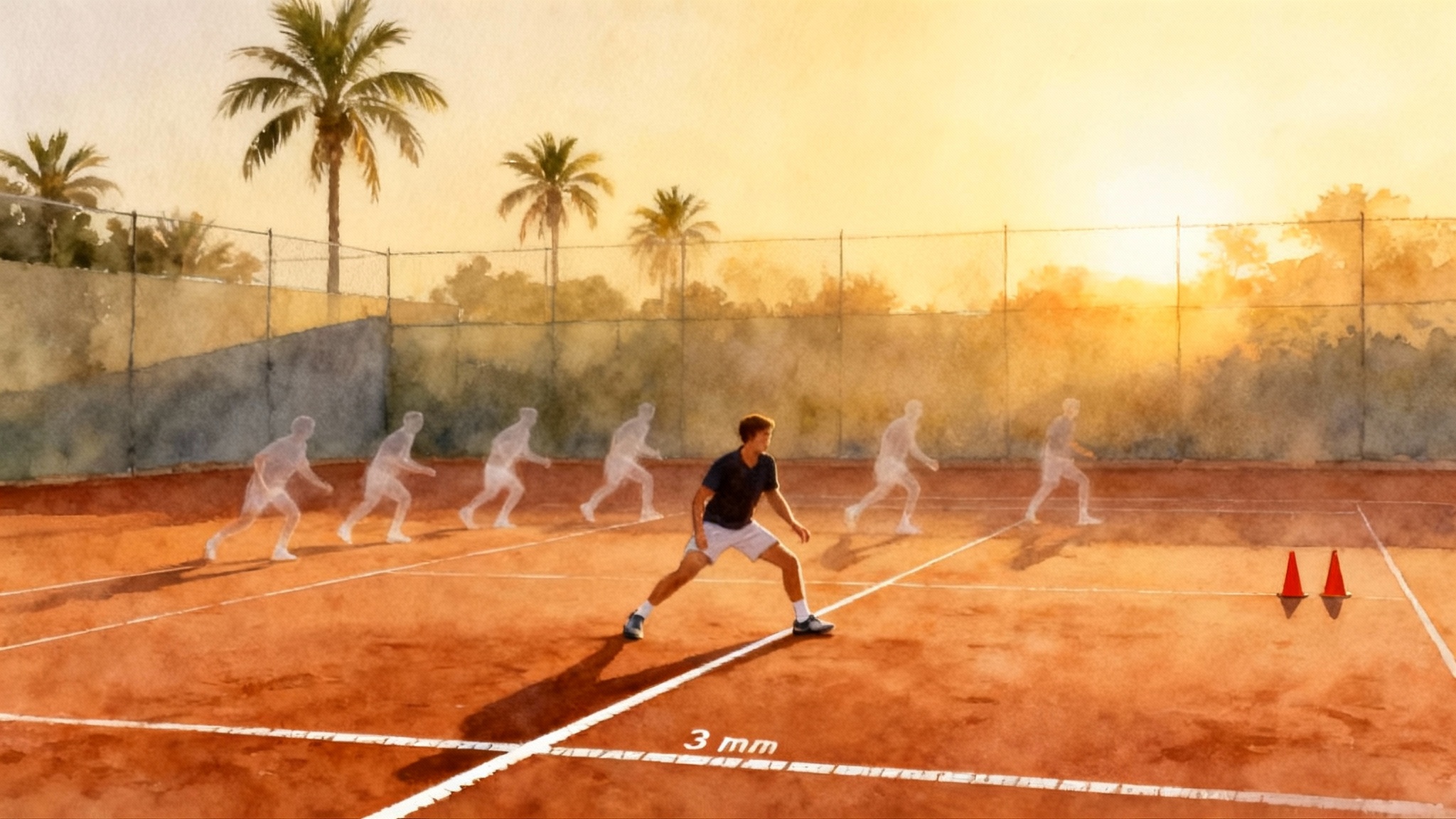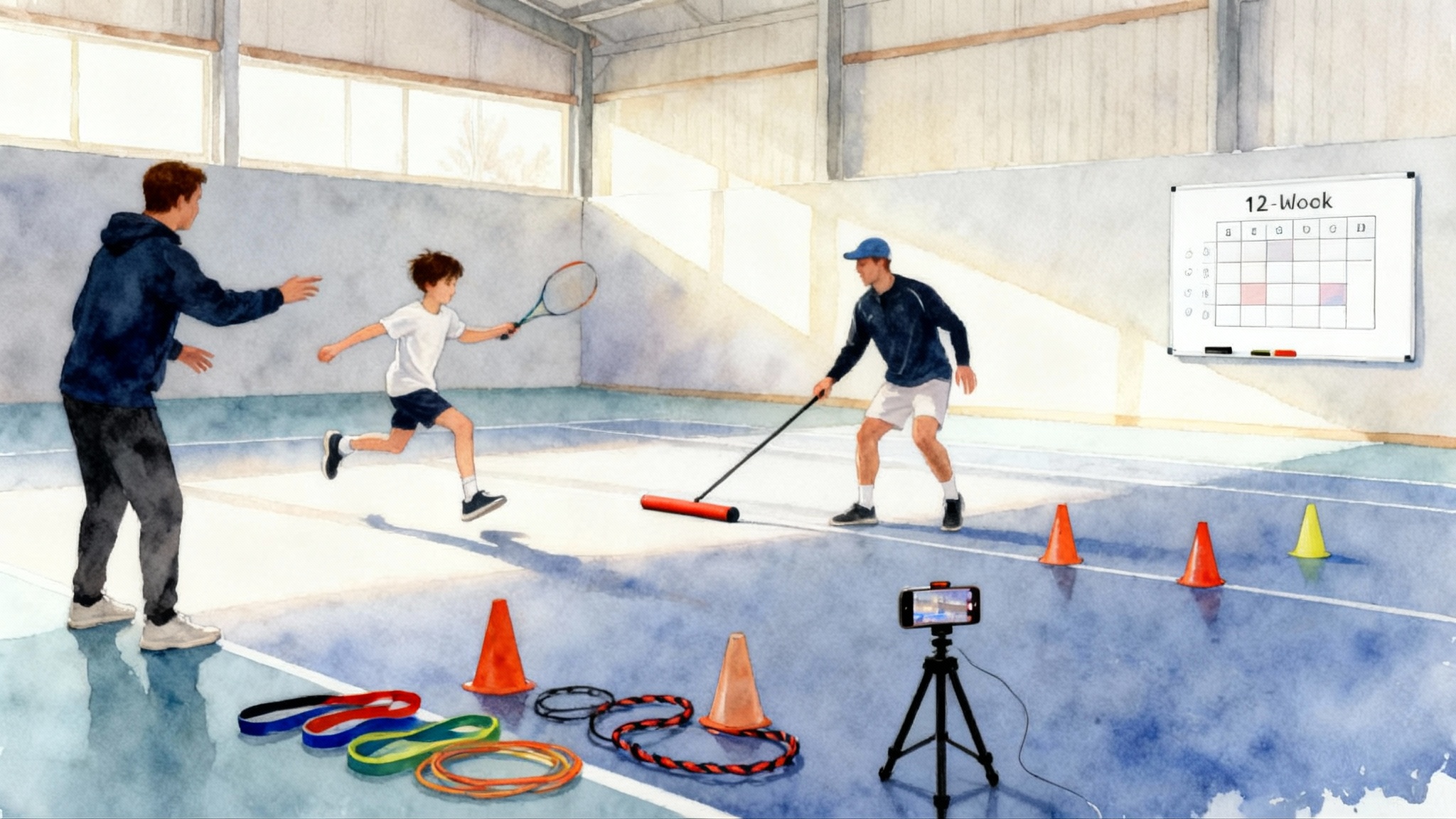Age-Smart Serve Blueprint 2025: Power, Spin, Consistency for All
A step-by-step serve guide for 10U, 11–14, 15–18, and adults. Technique checkpoints, mobility and strength add-ons, med-ball and cord drills, at-home radar and spin metrics, weekly microcycles, college coach criteria, and clear next steps.
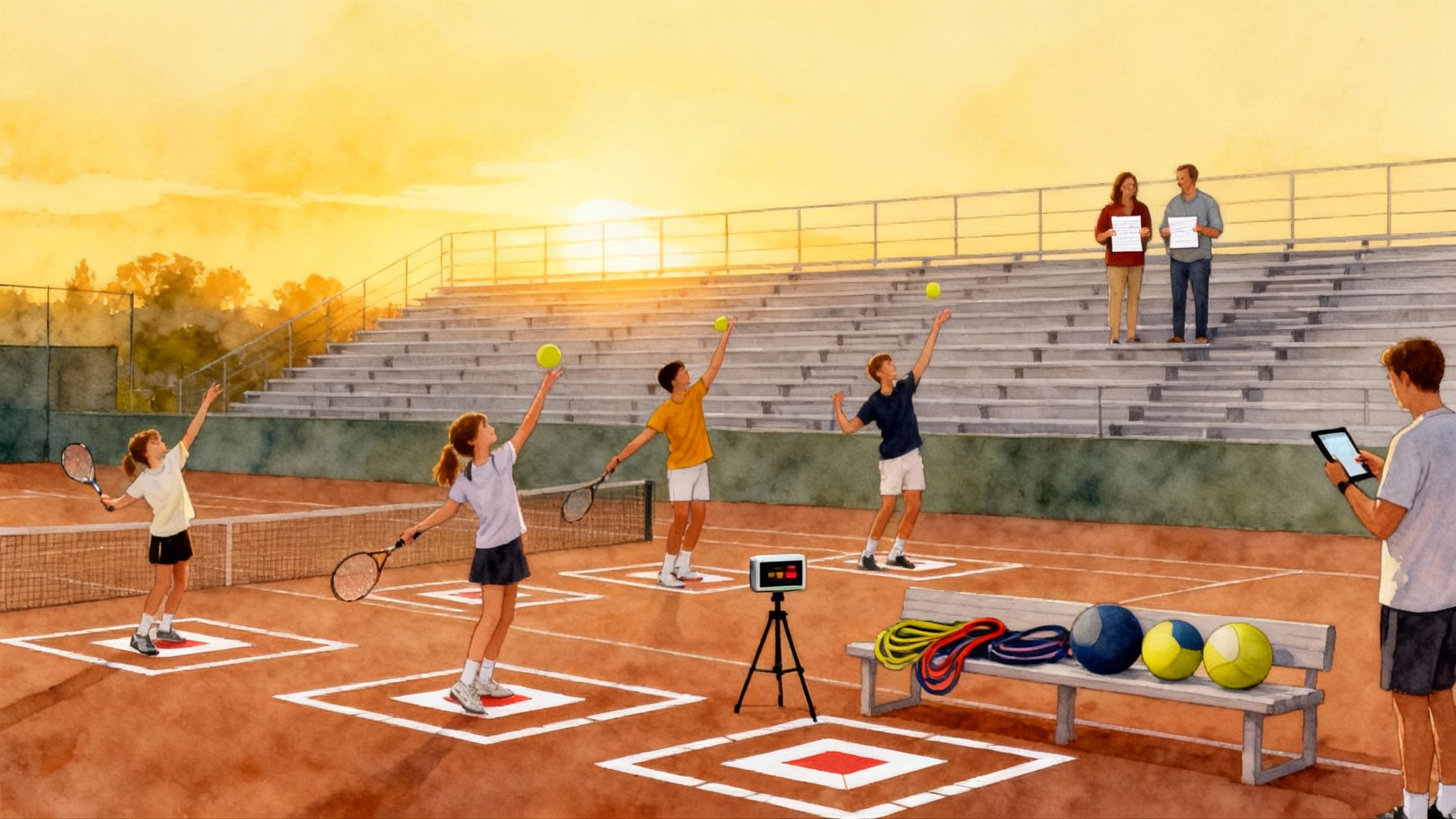
Why an age-smart serve plan wins in 2025
Your serve is the only shot you control from first toss to finish. It decides free points, sets up your favorite pattern, and determines how confident you feel on big points. Yet most players of every age train their serve reactively. They fix a miss in the moment, add a cue they saw on social video, then hope for the best next match. That is not a plan, and it rarely sticks.
This blueprint gives you a clear, age-smart path. Each band includes technique checkpoints, quick mobility and strength add-ons, medicine ball and cord drills, measurable at-home work with affordable tools, and a realistic weekly microcycle. You will also get a parent cue sheet, red-flag pain checks, and what college coaches evaluate in a recruit’s serve. Use it as your practice template or bring it to your coach and build a shared plan. For filming tips and better feedback, see our smart video analysis guide.
The serve skill stack
Think of the serve as a three-layer stack that you rebuild every season:
- Technique that travels: Toss quality, rhythm, shoulder-hip separation, contact in front, and a balanced landing that feeds the first step. Good technique looks calm and repeatable rather than forced.
- Engine behind the motion: Hips and trunk deliver most of the power. Shoulders transfer that energy. The hand simply finishes what the body starts.
- Numbers you can track: Toss accuracy, first-serve percentage at target, second-serve depth and kick, average speed, and double fault rate. What you measure improves.
Affordable tools make the last layer easy. A compact radar such as Pocket Radar Smart Coach and a phone-based video app such as SwingVision video app give speed, spin estimates, and location maps. You do not need tour-level data. You need consistent, repeatable snapshots, then small weekly gains.
What college coaches actually evaluate
If you are on a recruiting path, assume coaches watch with a short checklist and a long memory. They want to see:
- First-serve speed that fits your level, but more important, location variety and the ability to hit three out of four to a chosen corner under pressure.
- A second serve that clears the net with shape, lands deep most of the time, and allows you to hold serve without fear. One strong second serve pattern beats two timid ones.
- A quiet toss that returns to the same strike zone with minimal drift, and a consistent pre-serve routine that holds up in long games.
- Serve plus one clarity. After the serve, do you know your next ball purpose and footwork path, and can you show it on both deuce and ad?
Target bands for older juniors are practical rather than promises. For many competitive 17 to 18 year old boys, a strong first-serve band lives near 100 to 115 miles per hour on a handheld radar. For many competitive 17 to 18 year old girls, 85 to 100 miles per hour is a solid band. These are training aims, not gates you must pass. Coaches trust repeatable location and a second serve that survives pressure more than raw speed.
Tools, setup, and simple metrics
- Radar: A pocket radar behind the back fence at net height, centered, eight to ten feet behind the baseline. Take ten first serves per side, remove obvious mishits, and average the remaining.
- Spin estimate: Use a phone app that tracks ball flight and rotation. The exact number matters less than week to week change. Track shape and bounce height on second serves.
- Toss map: Place a 12 inch ring on the ground one foot inside the baseline, aligned with your front foot. Video from the side. Count how many tosses drop into the ring when you let the ball fall untouched. You want eight out of ten.
- Target tiles: Tape four foot squares in each service box corner. Score one point for a hit, half a point for a one foot miss, zero for wider.
10U: Build safe rhythm and a repeatable toss
At this stage we build love for the motion, safe patterns, and a simple toss. Use red, orange, or green balls that match height and strength. Lower compression lets juniors work on shape without muscling the ball.
Technique checkpoints
- Feet start comfortably staggered, not locked together. Hips rock gently to start a smooth rhythm.
- Toss arm rises straight with palm up, eyes follow the ball, contact is in front at forehead height, finish on balance with the chest over the front foot.
- Cue the shoulder turn and tall reach rather than arm speed.
Mobility and strength add-ons, 5 minutes
- Cat camel and open book, five each side for spine mobility.
- Tall kneel overhead reach with light stick, six slow reps.
- Heel raises and single leg balance holds, twenty seconds each side.
Med ball and cord drills, 6 minutes
- Mini med ball rainbow throws, four sets of five per side, focus on smooth arc and finish.
- Light resistance band scarecrows, two sets of ten, then band assisted shadow serves, two sets of six.
At-home measurable work
- Toss accuracy: Ten toss and drops into the ring before dinner. Record the score on a chart.
- Target game: Two sets of ten gentle serves to the deuce wide square, then to the ad body. Count hits.
Weekly microcycle example
- Monday: Technique and toss games, twenty minutes.
- Wednesday: Med ball rainbow throws, light band shadow serves, short target game.
- Saturday: Rally day, then five minutes of serves to a large square. End while fresh.
Parent cue sheet
- Say: Tall reach, slow smooth toss, land like a statue.
- Avoid: Hit harder, or push the elbow higher. Do not chase speed yet.
- Watch: Calm breathing between serves, and a fun, short routine.
Red-flag pain checks
- Any sharp elbow or shoulder pain during or after practice, any back pain that lingers overnight, or a toss that suddenly becomes erratic and painful. Stop serving and consult a qualified clinician. Young elbows and backs need patience.
11–14: Learn spin and spot serving without stress
We add a real second serve, more hip drive, and simple patterns. Growth spurts change body maps, so keep cues simple.
Technique checkpoints
- Strong trophy position with both knees flexed, chest tall, and the hitting elbow relaxed rather than jammed.
- Contact slightly in front of the lead hip, strings brush up and across for spin. Land on the front foot with a soft knee and the back foot stepping through naturally.
Mobility and strength add-ons, 8 minutes
- Half kneel hip flexor with side reach, four slow breaths per side.
- Forearm pronation and supination with a hammer or light club, two sets of ten per side.
- Dead bug with slow exhales, two sets of six per side for trunk control.
Med ball and cord drills, 8 minutes
- Kneeling scoop toss to a partner or wall, three sets of six. Feel hips start first.
- Step-behind rotational throw, three sets of five per side.
- Light to medium band external rotation, two sets of twelve, then band resisted shadow serves, two sets of six.
At-home measurable work
- Radar ladder: Five serves at comfort speed, five at plus three miles per hour, five at plus five, then return to comfort. Record averages. The return to comfort should now be one to two miles per hour faster.
- Second serve arc check: Place a rope three feet above the net on two cones. Ten second serves must clear the rope and land past the service line. Count makes.
Weekly microcycle example
- Monday: Technique and spin, twenty five minutes, finish with second serve arc check.
- Wednesday: Med ball and cords, then a radar ladder, fifteen minutes total.
- Friday: Serve plus one pattern play, eight points per side, keep a simple box score.
- Weekend: Light toss map and video check, five minutes.
Parent cue sheet
- Say: Brush up, finish on balance, breathe before the toss.
- Avoid: Snap your wrist. The wrist will move, but the cue leads to forced motion.
- Watch: Toss height stays consistent through growth spurts, front knee does not collapse.
Red-flag pain checks
- Night shoulder pain, persistent low back discomfort with extension, elbow pain that lasts more than twenty four hours. If any appear, pause serve work and seek assessment.
15–18: Pressure-proof power and a trustworthy second serve
Now we convert good mechanics into weapons that last in long matches, tournaments, and showcases. We stress-test the second serve and sharpen location under fatigue.
Technique checkpoints
- Kinetic chain timing: Legs load as the tossing arm rises, trunk rotates late, the racquet lags behind, and contact is slightly in front with a high reach. The hitting shoulder stays below ear level through acceleration to reduce stress.
- Landing and first step: Land balanced, then move into your serve plus one pattern without a pause.
Mobility and strength add-ons, 10 minutes
- Front foot elevated split squat, three sets of five per side, slow down, quick up.
- Tall kneel anti-rotation press with a light band, two sets of eight per side.
- Thoracic spine rotations on the bench, six per side.
Med ball and cord drills, 10 minutes
-
Standing cross-connection throw, three sets of five per side. Think hip drives, rib cage follows, arm last.
-
Overhead med ball slam to bounce, three sets of six. Finish tall, not bent.
-
Heavier band sequence: External rotation, diagonal patterns, and band assisted shadow serves, ten minutes total.
At-home measurable work
- First-serve location test: Twenty balls, five to each corner. Target three out of five hits per corner before increasing speed.
- Second-serve stress test: Two sets of twenty second serves with a strict point penalty for double faults. Track double faults per set and aim to reduce by one per week.
- Speed bands: Three speed zones on radar. Zone A is reliable match speed, Zone B is a five miles per hour push, Zone C is maximum for the day. Spend sixty percent of reps in Zone A, thirty percent in Zone B, ten percent in Zone C.
Weekly microcycle example
- Monday: Location test and Zone A work, thirty minutes.
- Wednesday: Med ball and cords, then Zone B ladders, twenty minutes.
- Friday: Second-serve stress test, serve plus one patterns, twenty five minutes.
- Sunday: Video review with a coach, ten minutes of targeted shadow serves.
College coach spotlight for this band
- First-serve average at your match speed, not your practice peak.
- Second-serve depth and height over the net, predictable bounce that protects your backhand corner.
- Composure in deuce and ad pressure points. A repeatable routine that slows your breathing and locks your toss.
- Ability to hit the same target three times in a row on request. Train this skill weekly.
Red-flag pain checks
- Elbow tenderness over the bony tip, shoulder pain that limits overhead reach, or sharp pain with lumbar extension. Stop and get cleared. Add posterior shoulder soft tissue work and consult a medical professional who understands tennis. Build a routine with our age-specific arm care plan.
Adults: Longevity, smart speed, and dependable spin
Adult players have jobs, families, and real life. Volume must match recovery. The goal is not a heroic session, it is a string of consistent weeks without setbacks.
Technique checkpoints
- Taller reach and better hip use create speed without strain. The racquet head should feel heavy and late, not forced early.
- The second serve gets three priorities: shape, depth, and no fear. You do not need a tour kick. You do need a second serve that lands deep and keeps you neutral.
Mobility and strength add-ons, 10 minutes
- Supported ankle rocks and calf raises, ten each side.
- Side plank and reach, two sets of twenty seconds each side.
- Wall slides and band pull aparts, two sets of ten.
Med ball and cord drills, 8 minutes
- Rotational throw into a wall at moderate effort, three sets of five per side.
- Split stance band resisted shadow serves, three sets of six. Focus on smooth acceleration.
At-home measurable work
- Toss audit: Ten toss and drops into the ring, five days per week. This is the cheapest serve upgrade a busy adult can make.
- Radar anchor: Measure your comfortable first-serve average once per week. Add two miles per hour by improving rhythm and contact location, not by muscling.
Weekly microcycle example
- Tuesday: Short serve block with toss audit and target tiles, twenty minutes.
- Thursday: Med ball and cords, then ten minutes of second serves over a rope.
- Weekend: Match play, then a short cool down and shoulder care.
Red-flag pain checks
- Shoulder pain that wakes you, elbow pain that lingers past the next day, or back tightness that limits daily tasks. Reduce volume, adjust technique, and seek a qualified assessment.
Fast diagnostics you can run tomorrow
Use these quick tests to decide what to train this week.
- Toss drift check: Film from the side. If the ball floats backward or too far right for right handers, prioritize toss work and slow shadow serves.
- Contact height check: Freeze the video at contact. If the head is ducking or the elbow is high and jammed, you are losing power and adding stress. Train a taller reach and a later racquet snap.
- Landing balance check: If you fall sideways or spin out, you will miss locations under pressure. Add split stance band serves and front foot land and hold drills.
Plug-in med ball and cord library
Use this menu to swap in fresh options every two weeks.
- Med ball menu: Kneeling scoop, step-behind rotational, cross-connection, overhead slam to bounce, tall kneel shot put. Pick two, five reps per side, three sets total.
- Cord menu: External rotation, diagonal patterns, assisted shadow serves, anti-rotation press. Pick two, twelve reps each, two sets, then six assisted shadow serves.
How to write your four-week microcycle
- Week 1: Assessment and low volume. Film your serve, run the toss map and location test, set radar anchors. Keep intensity at sixty percent.
- Week 2: Quality volume. Add ten to twenty total serves per session. Emphasize second-serve shape, Zone A speed, and landing balance.
- Week 3: Stress test. Add a pressure ladder. Miss two in a row, drop to a safer target, then rebuild to your top corner.
- Week 4: Taper and showcase. Reduce total serves by twenty to thirty percent, film a match play set, and log your best metrics.
Parent and player communication scripts
A cue said right once beats a lecture said daily. Use these short scripts.
- Before practice: What is the one thing you will own today on your serve, and how will we know you did it?
- After practice: Which target improved and what number proves it? What is the smallest adjustment for tomorrow?
- During a rough patch: Breathe in through the nose, exhale long, then say the three word cue. Tall toss, brush up, land forward.
Red-flag checklist you can print
Stop serving and get assessed if any are true:
- Sharp pain in the elbow, shoulder, or low back during the motion
- Pain that lingers more than twenty four hours or disrupts sleep
- Sudden drop in toss control with pain or tingling
- Back pain with extension and rotation that does not improve with rest
Case study funnel: Life Time Tennis Academy serve evaluation
Large academies blend video, data, and on-court coaching. A typical ninety minute Life Time Tennis Academy evaluation includes a joint screen, a toss and rhythm audit, radar baselines at match speed, and a serve plus one pattern map. Athletes leave with a two week plan, one med ball drill, one cord sequence, and two location games tied to numbers. Parents receive the cue sheet and a red-flag checklist. The follow up appointment checks only two things: Did location targets improve, and is the second serve more dependable when tired.
If your family needs a starting point, book a serve evaluation and request a printed version of this blueprint with the exact microcycle for your age band. Bring your radar data or your video app results. The more you measure, the faster we can individualize.
Your next three actions
- Pick your age band and write three numbers to track this month. Tosses in the ring, first-serve average speed, and second-serve arc clears.
- Choose one med ball drill and one cord drill. Do them twice per week for fifteen minutes total.
- Schedule a serve evaluation. Arrive with last week’s numbers and two short videos from behind and from the side.
Closing thought
The serve rewards calm repetition, small daily progress, and a plan that matches your age and schedule. Build the motion with simple cues, train the engine with short strength add-ons, then measure what matters. In four weeks you will not only hit a bigger ball, you will trust your serve on the points that decide your matches.
